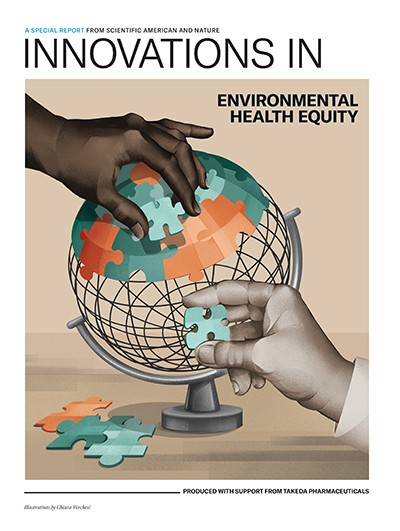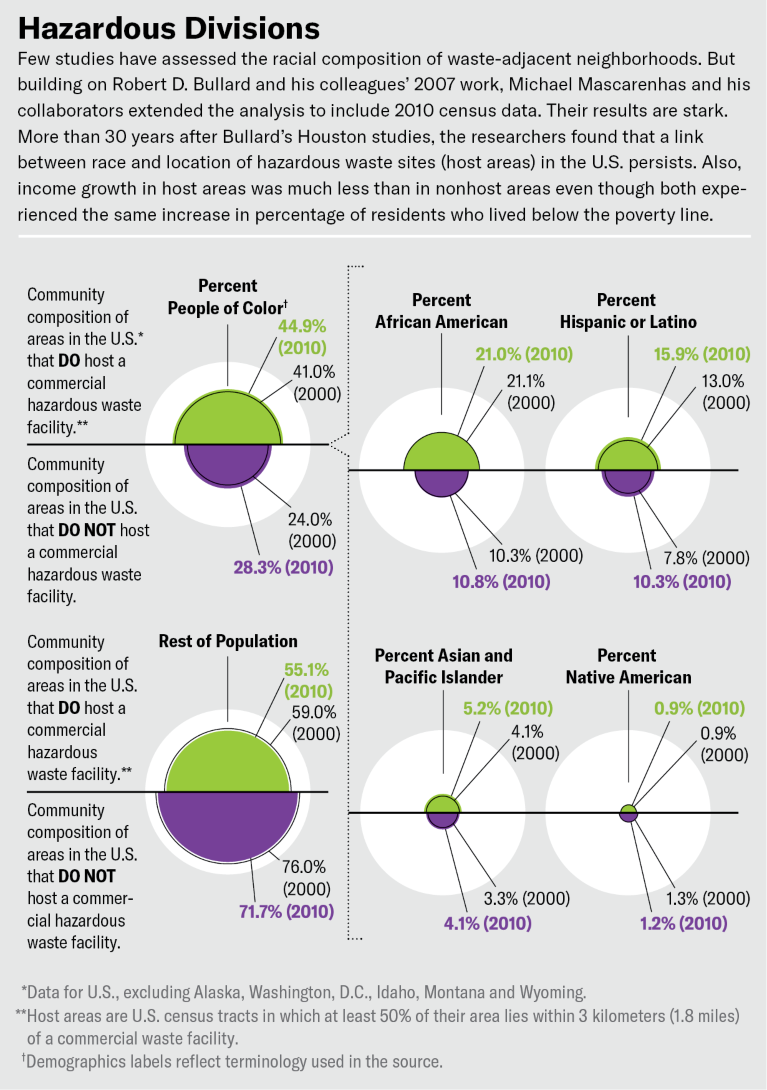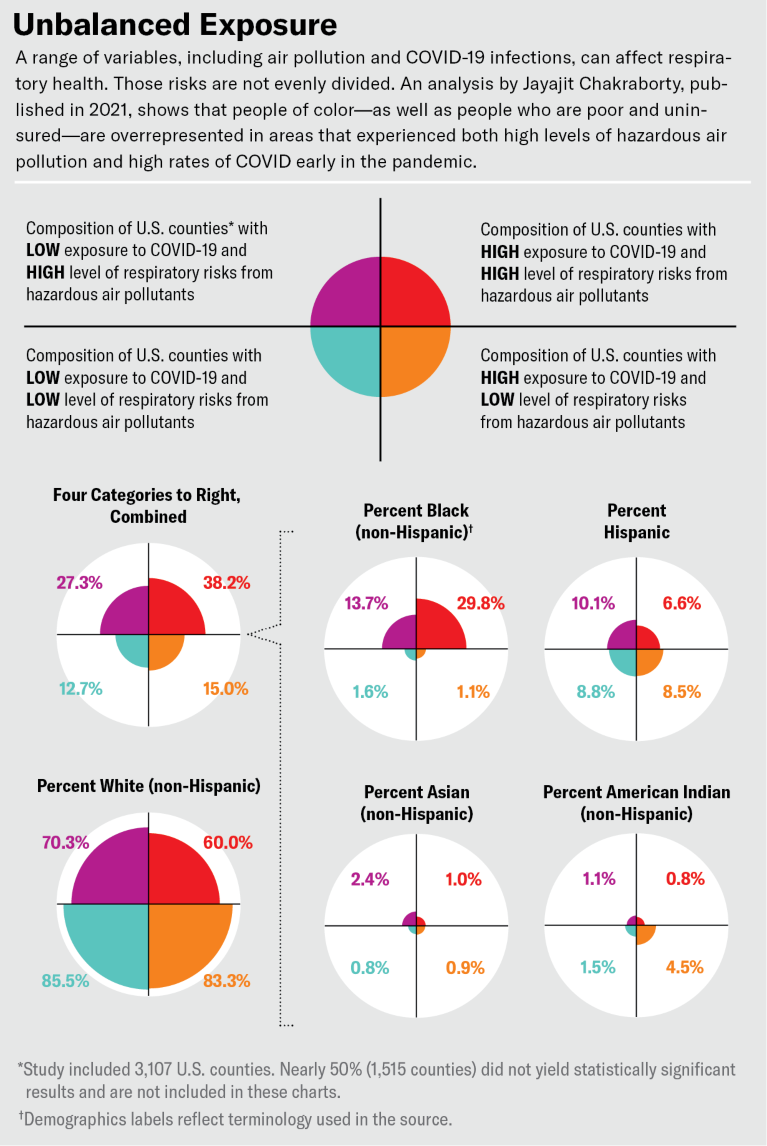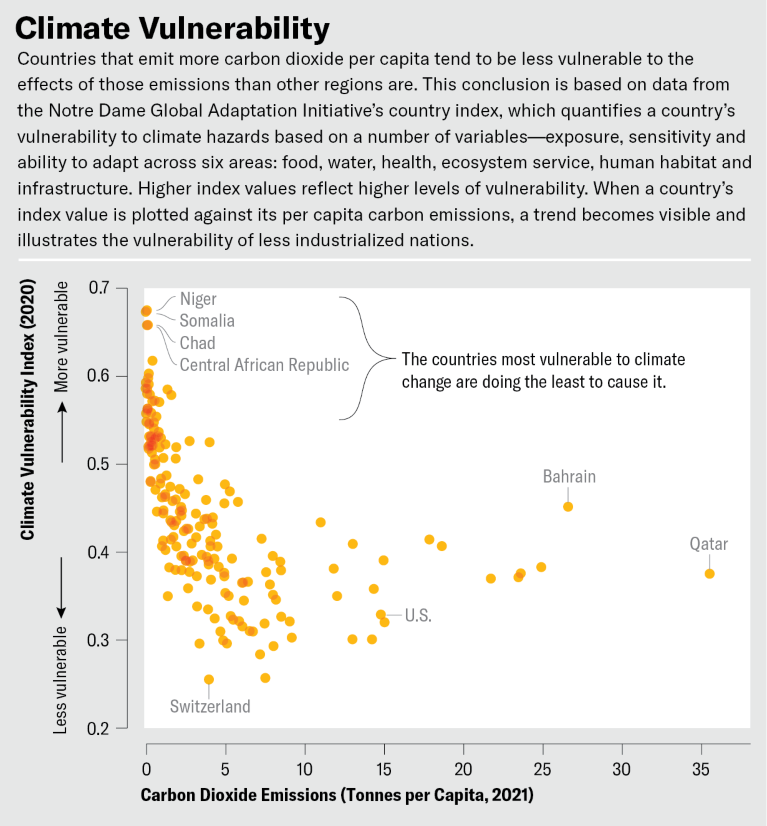Black people face some of the highest cancer and asthma rates in the U.S., statistics that are inarguably linked to the environment in which someone lives, works and plays. But until Robert D. Bullard began collecting data in the 1970s, no one fully understood how a person’s surroundings can affect their health. And no one, not even Bullard, knew how segregated the most polluted places really were.
Bullard was the first scientist to publish systematic research on the links between race and exposure to pollution, which he documented for a 1979 lawsuit. “This is before everyone had [geographic information system] mapping, before iPads, iPhones, laptops, Google,” he says. “This is doing research way back with a hammer and a chisel.”

Innovations In Environmental Health Equity
In 2021 Texas Southern University in Houston established the Robert D. Bullard Center for Environmental and Climate Justice, where Bullard now serves as executive director. He has written 18 books on the topic, and his work helped to launch a movement. Environmental justice—the idea that everyone has the right to a clean and healthy environment, no matter their race or class—has been embraced by advocates around the world and is influencing international climate negotiations. Scientific American asked Bullard about his work and its impact in the U.S. and beyond.
Your early work signaled the start of a new field. How would you describe it?
Table of Contents
I do what’s called “kickass sociology.” I’ve tried to pattern my work after a kickass Black sociologist: W.E.B. DuBois, who showed how someone can be a teacher, scholar, researcher, author, social critic and activist. He helped to found the NAACP [in 1909]—the oldest and largest civil rights organization in the U.S.—and he did some of the first empirical research in sociology.
Your first paper, in 1979, was the first to use hard data to quantify environmental racism. What prompted you to look into this?
The study was done in support of Bean v. Southwestern Waste Management Corporation, the first U.S. lawsuit to challenge environmental racism using civil rights law. The lawyer for that case was Linda McKeever Bullard, my wife at the time, and she needed numbers to back up the argument that locating solid waste landfills in a particular neighborhood was a form of discrimination. The community was middle class, suburban and an unlikely place for a garbage dump. It was also predominantly Black.
My job was to design the study, collect the data, and present maps that showed where all the landfills, incinerators and solid waste sites were located in Houston from the 1920s up to 1979. We found that five out of five of the city-owned landfills were in predominantly Black neighborhoods, as were three out of four of the privately owned landfills. Six out of eight of the city’s incinerators were in Black neighborhoods. Black people made up only 25 percent of Houston’s population at the time, yet 82 percent of the garbage in the city was dumped on them.
We lost in court because we couldn’t prove it was intentional discrimination. It was easier to show scientifically that this pattern reflected a form of discrimination and not random data, but it’s more difficult to prove it in court.
When you saw how widespread this pollution was in Black communities, what did you think?
I was surprised. I was amazed and shocked. But I was even more surprised and shocked and disappointed that the judge didn’t see it. This was 40-something years ago. The judge was an old white man who was calling Black plaintiffs in the case “Negresses.” That’s a fancy, dressed-up way of calling you the N-word. The racial undertone was so thick. It was almost as if that case were brought too soon.

Source: Mascarenhas, M., Ryken Grattet, R. & Mege, K. Environ. Soc. 12, 108–126 (2021)
What was the public response to your initial studies?
Communities on the ground, the ones who were being poisoned and ignored, started to come together. Grassroots and civil rights groups began to build coalitions and collaborate. By 1990 we were organizing the First National People of Color Environmental Leadership Summit. The industry attacked us. Some of us were sued. Some of us were intimidated and threatened. But we’ve kept fighting because we have justice on our side. A lot of people tried to debunk our work, but they never could. We had to fight with some of our environmental allies: conservation groups that were mostly white and affluent. They’re with us now, but they were not always.
How have you built on those first studies?
I expanded my Houston study. I wanted to know whether the Houston example was an outlier. That’s how the first book on environmental justice came about. I wrote Dumping in Dixie in 1989, but it took me a year to get that book printed. I had clear data showing that this discrimination was happening from Houston to Dallas, to the Louisiana Cancer Alley, to the Alabama Black Belt, to West Virginia. But the publishers said, “There’s no such thing as environmental injustice. Everybody is treated the same. The environment is neutral.”
All of what we’ve done since the Houston study has intentionally challenged the dominant paradigm. We argue that communities that have somehow been left out and left behind should be first in line when we talk about protection. Regulations should protect the most vulnerable populations, especially children of color.
Now environmental justice is not just in the U.S. It’s global. It has been adopted into environmental reparations efforts. We talk about making our communities whole because of the damage the fossil-fuel industry has caused. We talk about repairing our communities. In a global sense, reparations have translated into the Loss and Damage Fund, a pot of money established by higher-income countries at the 2022 United Nations Climate Change Conference. The fund aims to mitigate harm more developed countries have caused in less developed nations, which have contributed the least to climate change. They’re feeling the pain and suffering first, worst and longest. It took 27 climate summits before the Loss and Damage Fund was adopted as a policy.
The road to where we are now has not been a bed of roses. We’ve always had detractors and people who have been well funded in fights against us.

Source: Chakraborty, J. Environ. Res. 193, 110586 (2021)
What about global environmental racism and the importance of using a global lens?
We held our First National People of Color Environmental Leadership Summit in 1991, and representatives attended from the vast majority of U.S. states, as well as several foreign countries and tribal nations. Our principles of environmental justice—which include the safety of workers, the rights of Indigenous peoples and the honoring of nature—have been translated into half a dozen languages. And globally, in countries that have suffered because of colonialism, imperialism and racism, communities are now applying that same environmental justice lens to their organizing. Our principles of environmental justice resonated with the Global South. Those countries that have contributed the least to climate change are feeling that pain and suffering right now, as they have been for decades.
The environmental and climate justice framework that we use for the research in the U.S. has expanded to universities across the world: South Africa, Australia, Scotland. In some cases, they use not a racial lens but an equity lens that looks at gender, income, former colonization status, and market forces that have stripped people of the power to decide for themselves whether they want a new project in their communities.
This research is supported by the framework that we set in place, one that uses a community-university partnership. The people who are most negatively impacted also carry knowledge and solutions. These decisions affect their homes, their families and their lives, so it’s important that they remain involved. Community science is probably the fastest-growing part of the global climate and environmental justice movement.
How did race come to be such a defining factor in the U.S. for who gets clean air or water and who does not?
Racism is deeply ingrained in America’s DNA. Race has always played a significant part in who’s free, who gets educated and who is a citizen. There was slavery, then emancipation and Jim Crow segregation, where “separate but equal” was codified. If a Black person, for example, paid the same taxes as a white person, those taxes were not spent in a way that gave them equal protection and treatment.
The Civil Rights Act was wasn’t passed until 1964. Racial redlining drew a line around Black and brown neighborhoods, labeling them as dangerous and undesirable for loans. That prevented our neighborhoods from benefiting from infrastructure such as sewer and water systems.
We’re now seeing the legacies of that racism. Neighborhoods that were redlined 100 years ago are hotter today because of urban heat islands. They have no tree canopy or parks or green space. They’re more prone to flooding because they lack flood protection. They are more prone to industrial pollution. And we’ve learned that the same neighborhoods were more prone to COVID hospitalizations and deaths.
These are all examples of how past racism keeps getting transferred forward: it increases vulnerability.

Sources: CO2 emissions: Global Carbon Institute via Our World in Data; Climate vulnerability index: Notre Dame Global Adaptation Initiative
You’ve been doing this for almost 50 years now. What keeps you going?
I’ve seen environmental justice move from a footnote to a headline, which means we are making inroads and progress in research and in policy. Even though we’ve made strides, we have a long way to go. Just having the data has never been enough. We must take these findings and convert them to policy. You have to marry facts with action, and there’s not been enough action—even after all the reams and reams of studies.
What comes next for you?
We have a couple of projects. One is our participation in the U.S. government’s Justice40 Initiative, which is funded by the Bezos Earth Fund. It looks at how our center can work with communities and use our HBCU [historically Black college or university] consortium to help communities that have been underserved and invisible when it comes to issues around climate, economic development, housing, transportation and clean energy.
Another is a Bloomberg project we’re participating in that looks beyond petrochemicals. How do we explore transitioning to a clean energy economy and, at the same time, make sure that transition is equitable, fair and just?
We are helping community-based organizations in Texas resist the 80-plus new oil and gas facilities proposed for Houston, Beaumont-Port Arthur and Corpus Christi—areas already impacted by petrochemical plants. This is complemented by a study we’re doing that examines the environmental justice implications of rapid permitting and build-out of terminals for liquefied natural gas in the Gulf Coast. Ironically, many of the new facilities are being proposed in communities where most residents have low incomes or are people of color and where they are already burdened with petrochemical plants.
We’re also looking at the Inflation Reduction Act and the extent to which our center can collaborate with other organizations to ensure a holistic approach when we talk about greenhouse gas reduction. When we talk about cutting emissions, we’re also talking about creating green jobs and about supporting small-business entrepreneurs so they can be creative and innovative. It’s about getting more of our young people of color interested in science, technology and engineering so we can build out a pipeline for the future.
The environmental and climate justice movement today is intergenerational, and that’s exciting. I’ve been doing this for 40-plus years. I’m a Boomer and proud of it—still fighting and still standing. But the fact is, Millennials and Zoomers and Gen Xers combined outnumber my generation. We need to develop a strong intergenerational partnership so these younger people don’t have to hit brick walls.
We will get to the point where we will address all these challenges we have faced. Many are artificial barriers that we can break down to move more quickly toward solutions. We can take this quest for justice and pass the baton. That’s how we will cross the finish line.
